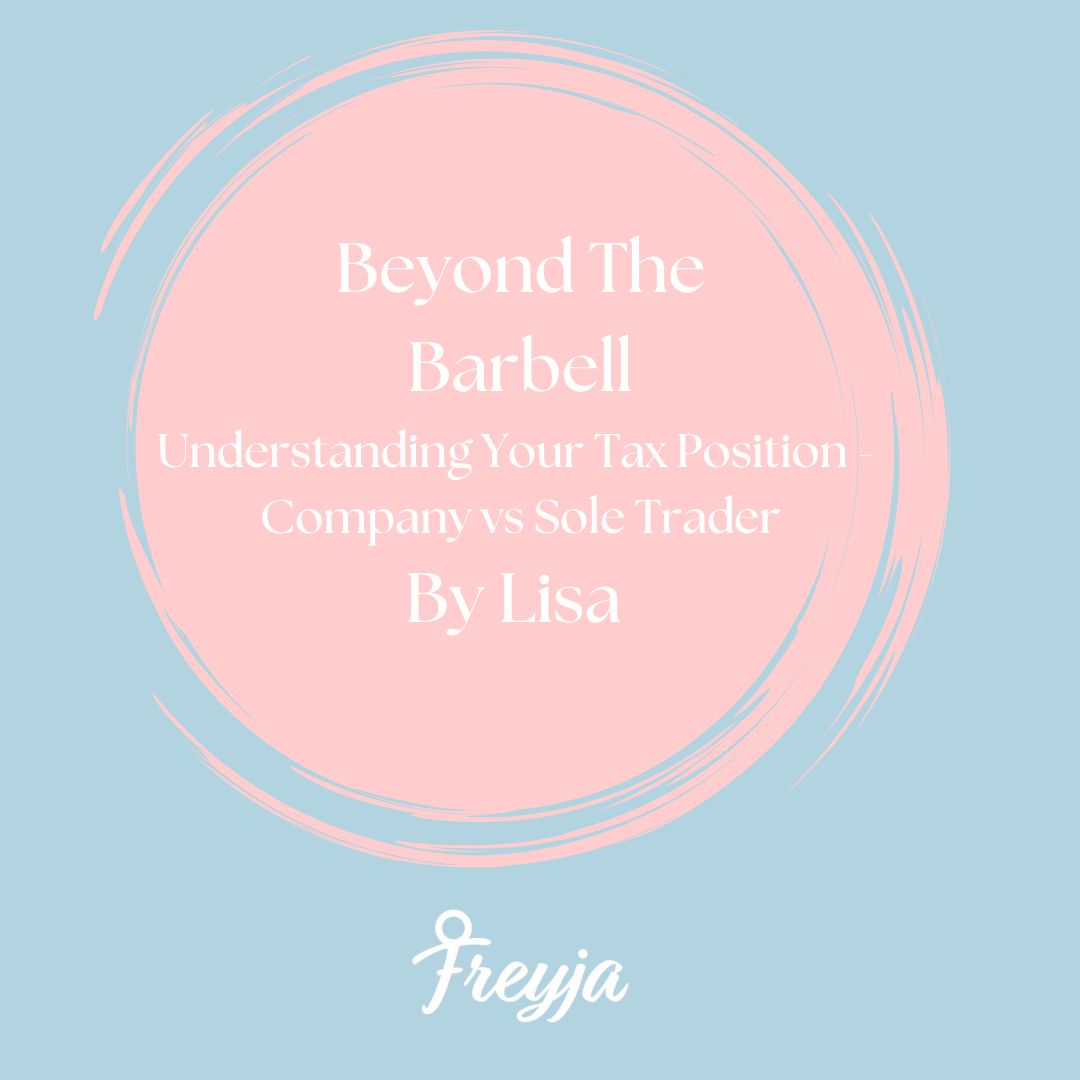
Beyond the Barbell: Understanding Your Tax Position
Last time we talked about choosing your business structure. This week, let's talk more about the numbers - giving you an idea of what you'll take home under each structure. As a chartered tax adviser, lawyer and entrepreneur who is now growing a business in the fitness space, I'm breaking down what this actually means for you when becoming a PT or establishing your first commercial gym.
Let's look at two real scenarios relevant to the fitness industry:
Scenario 1: The Personal Trainer Emma
Meet Emma (like many of our home gym clients):
- 25 sessions per week at £45 each
- 48 working weeks per year
- Annual revenue: £54,000
Common PT Expenses (just estimates):
- App/Commission: £2,500
- Insurance: £500
- Travel to clients: £1,200
- Equipment: £2,000
- Training/CPD: £800
- Marketing: £400
- Other: £1,000
Total Expenses: £8,400
Let's break down what Emma actually takes home:
As a Sole Trader:
- Taxable Profit: £45,600 (54,000 - 8,400)
- Personal Allowance: £12,570 (tax-free)
- Basic Rate Tax (20%): £6,606 (£33,030 x 20%)
- National Insurance Class 4: £1,982 (45,600-12,570=£33,030x6%)
*Class 2 contributions are treated as having been paid to protect your NI record. This means that you do not have to pay Class 2 however, in certain circumstances, you may wish to pay them voluntarily.
Take Home: £37,012 (45,600-(6,606+1,982+180))
As a Limited Company:
- Corporation Tax (19%): £8,664 (54,000-8,400)x19%)
- Salary up to £12,570 (no personal tax or NI)
- Dividends: £24,366 (54,000-8,400-8,664-12,570) paid as dividends
- Tax on Dividends: £2,088 (£500 tax free & balance at 8.75%)
Take Home: £34,848 (12,570& (24,366-2,088)
**19% is the Small Profits Corporation Tax Rate
The reality is that you’re unlikely to take all of the money out of the company if it is structured in this way. You’re likely to keep money in it for expenses and reinvestment. You can also deduct more costs with this structure so this would reduce the overall tax paid and increase the payment you receive. This really is just a guide.
Scenario 2: The Studio Owner
Meet Sarah (like many of our studio clients):
Annual Income:
- Monthly membership income: £12,000
- Monthly PT session income: £4,000
- Total annual revenue: £192,000
- Major Expenses:
- Rent: £24,000
- Staff costs: £60,000
- Equipment: £20,000
- Insurance: £2,400
- Marketing: £12,000
- Other costs: £15,000
- Total Expenses: £133,400
Let's compare the structures:
As a Sole Trader:
- Taxable Profit: £58,600
- Personal Allowance: £12,570
- Basic Rate Tax: £7,540 (37,700x20%)
- Higher Rate Tax: £3,332 (46,030-37,700x40%)
- Class 4 National Insurance: £2,429 (58,600-12,570=46,030 - 37,700x6%=2,262 + 2,262x2%=167)
-
Take Home: £45,299
As a Limited Company:
- Corporation Tax: £11,134 (58,600x19%)
- Optimal salary/dividend mix/leave within company for expansion/expenses
- Salary up to £12,570 (no personal tax or NI)
- Dividends: £37,700 (58,600-12,570) paid as dividends
- Tax on Dividends: £3,255 (£500 tax free & balance at 8.75%)
- Balance paid as Dividends or Income Tax. Or you may choose to leave in the business for expansion.
- Take Home: Approximately £47,015 Plus better tax planning opportunities.
Tax Planning Tips:
Timing Matters
- Sole traders: January and July payments
-
Companies: 9 months after year-end
1. Put aside 25-30% of profit monthly
- Smart Equipment Purchases
- Time large purchases strategically
- Consider lease vs buy options
2. Look at Annual Investment Allowance
Common Mistakes to Avoid:
- Missing registration deadlines
- Not keeping proper records
-
Mixing personal and business expenses
3. Forgetting about VAT thresholds
Tax-Efficient Growth:
- Plan your salary/dividend mix
- Consider timing of large purchases
4. Think about future tax years
- The structure you choose affects more than just tax and take home. A sole trader might take home slightly more in the early days, but a limited company gives you more options for tax planning and protection as you grow.
